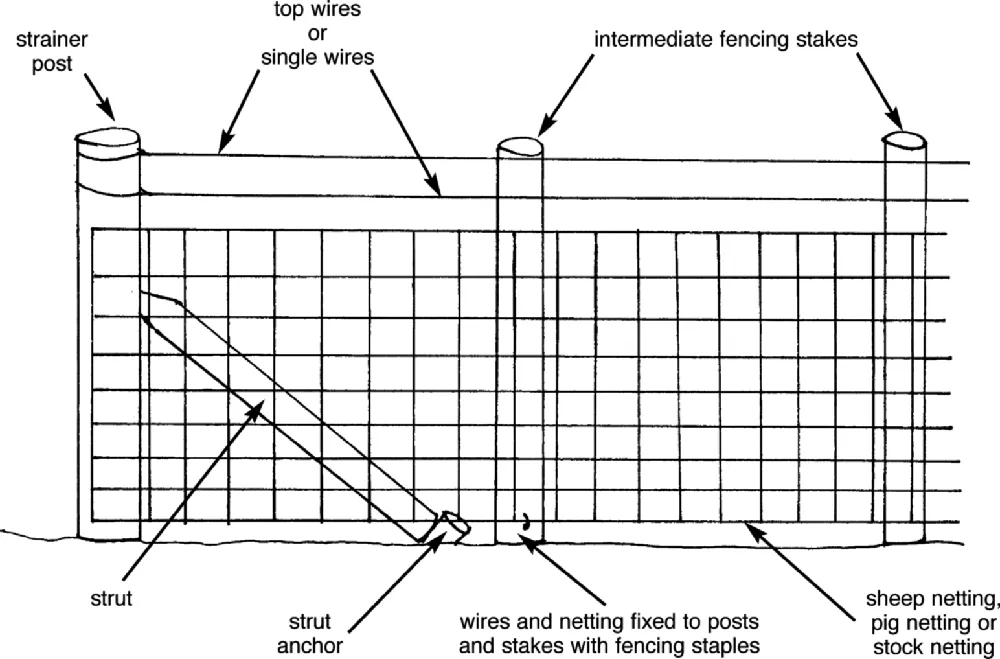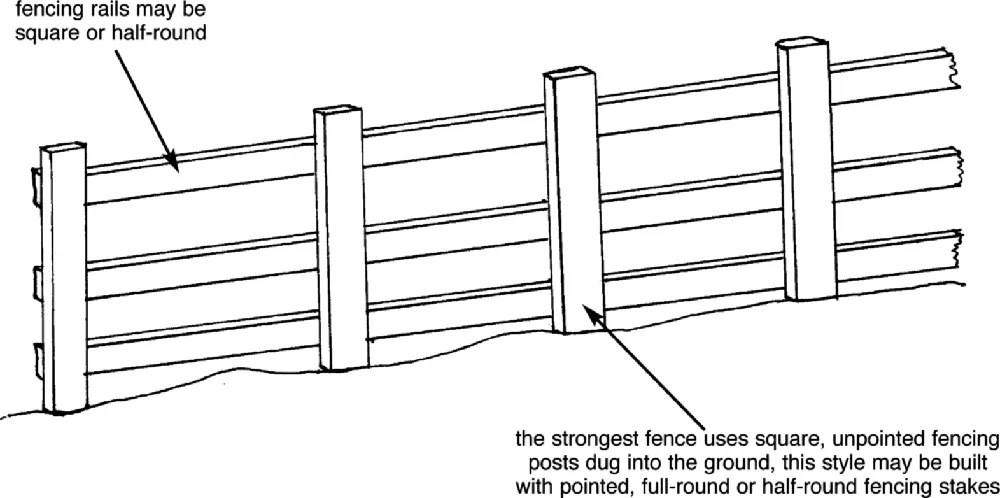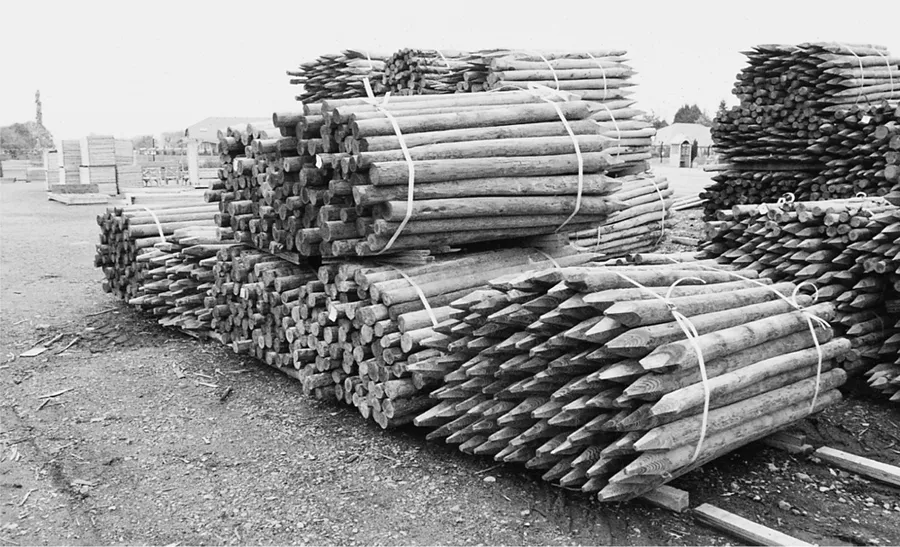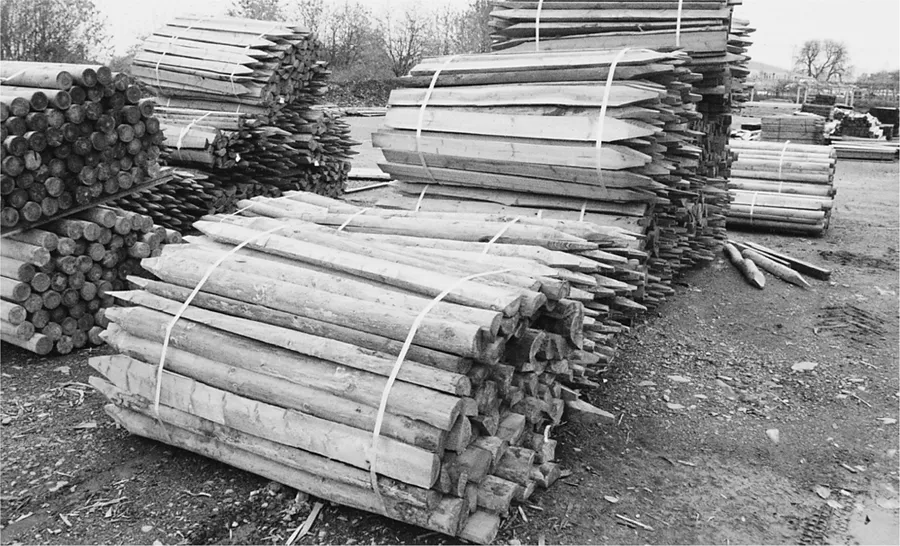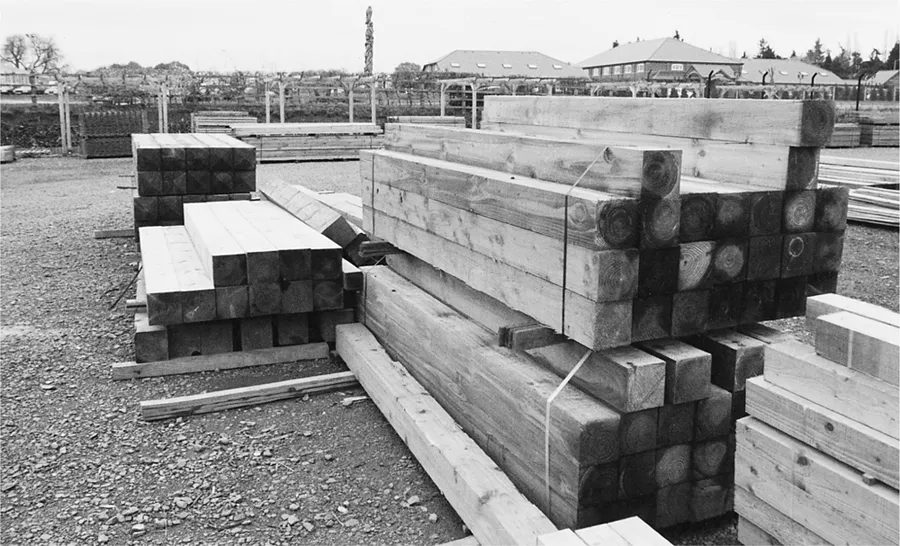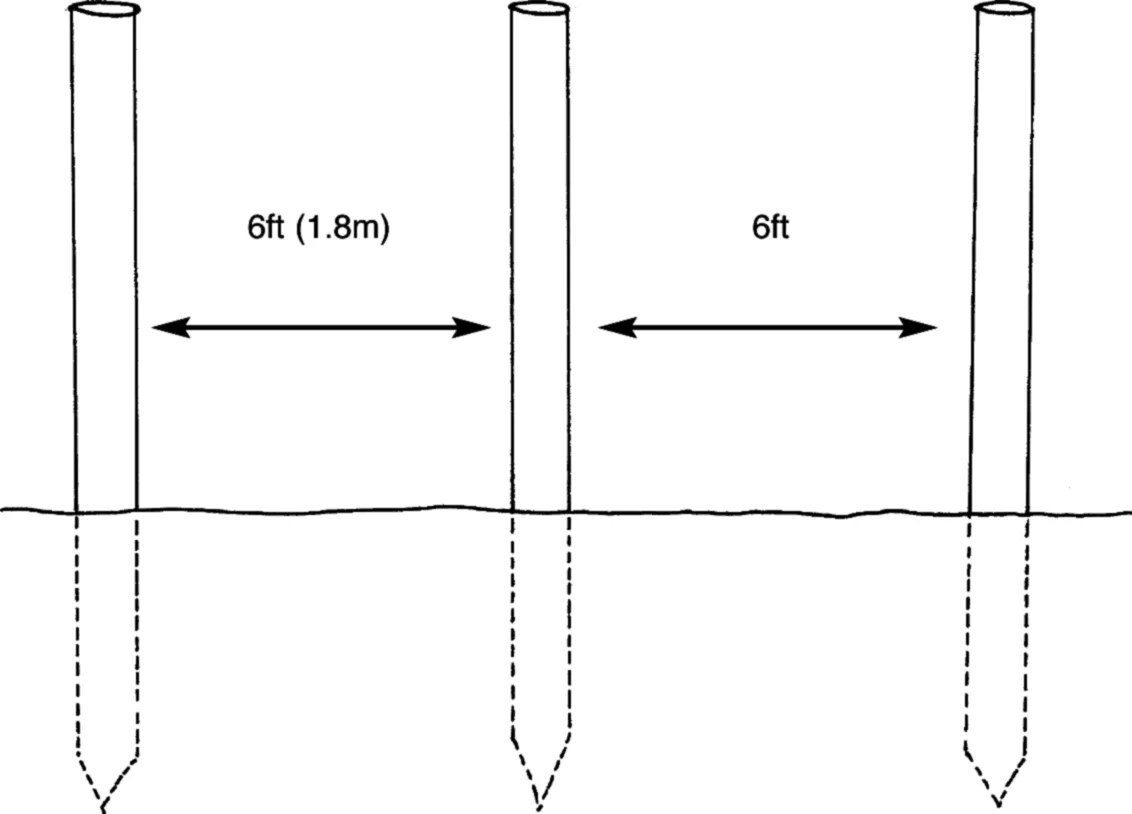![]()
CHAPTER 1
BACKGROUND TO THE STYLES OF FENCING
A walk or a drive through the countryside will reveal many mutations of fence line stretching over the landscape and one could be forgiven for thinking that the world hosts a plethora of styles, too many for a single book to cope with. This could not be further from the truth. Fences may be divided into two major categories: agricultural and domestic. As this book is primarily aimed at the smallholder, most of the projects described here centre on livestock containment or animal exclusion.
Fencing for agriculture is based around two main styles: post and wire and post and rail, with both often combining to form a single enclosure in its own right. Regardless of what type of fence is going to be constructed, they all have one important thing in common where materials are concerned, each fence, without exception, contains intermediate stakes or intermediate posts inserted into the ground at 6ft (2m) intervals. Intermediate stakes come in three major forms: pointed round, pointed half-round and square, and it is these stakes that make up the body of any given fence line, regardless of the stock-proofing or means to preserve privacy to be attached later.
The standard post and wire stock fence.
Parts of a post and rail fence.
Parts of a field gate.
Round, pointed fencing stakes.
Half-round fencing stakes.
Square unpointed posts.
The enclosure will change depending on the animal to be kept in it or, in some cases, to be excluded. Whereas sheep, goats and cattle may be retained by using the same materials, with a few subtle changes of design, larger animals, including equine stock, will require a totally different style. But given this, fencing follows a set of basic building techniques that are relevant to all permutations of the craft. Simple techniques that include the use of nylon string-lines to help in procuring a perfect, straight line of intermediate posts and the way one fixes the stock-proof wire or rail to the posts are of general applicability. Perhaps the most important point to mention with regard to all stock fences is the significance of the side of the enclosure to which one fastens the stock-proofing material. As a rule of thumb, the netting or rail is placed on the stock side, the side facing the animals. By doing this you ensure that, if animals push against it, which they often do, the staples holding the wire or the nails securing the rails will stay firmly in the timber instead of becoming dislodged, which would seriously undermine the effectiveness of the structure. Put quite simply, one has to make sure that any external pressure is applied to the fencing posts as opposed to the fixings.
The most popular form of stock fence many of us see in the countryside or on a smallholder’s land is the one encompassing the basic post and stock netting. It is relatively easy to construct and is not only ideal for sheep, but cattle, goats and pigs can benefit from it with a few minor changes to the design. Typically, this fence consists of six fundamental constructional features that, when added together, combine to form a strong, durable end product.
The Basic Stock Fence
Strainer Posts
These are the largest part of any new fence, typically measuring 7ft (2m) in height with a diameter of between 6 and 8in (15–20cm). One can see from these figures that a strainer post may be quite heavy and great care must be taken when hauling them around a worksite. As their name suggests, their main purpose is to cope with the high amount of tension applied to the wire when put under strain. Tension, or tensioning, is the term used for the mechanical process of pulling wire extremely tight. Working with strainer posts is probably the most laborious of any fencing work since they will need to be dug into the ground to a depth of 3ft (90cm). A good quality post and wire fence will require one of these every 27yd (25m).
Strainer post.
Stock side and non-stock side (post and wire fence).
Stock side and non-stock side (post and rail fence).
Struts
The strainer posts alone cannot cope with the tension needed to secure the wire. It is for this reason that one must attach struts to act as braces. To create a brace with a strut it will need to be fixed to the strainer post somewhere near the centre, usually by a mortise or a ‘V’ cut into the wood. It is then angled toward the ground where it is secured against a stone or to a stake embedded in the soil, usually called the strut anchor. Without struts, strainer posts will eventually lean towards the direction of tension or, in some cases, be pulled out of the ground. Struts are usually placed on the non-stock side of the fence. This is to make sure that they do not impede the travel of the stock netting and the top wire.
Intermediate strainer post with struts and strut anchors.
Pointed Intermediate Posts
These posts are knocked at least 1ft (30cm) into the ground along the proposed line of the new fence. Typical pointed intermediate posts measure 5½ft (1.6m) from point to top with a 3–4in (7–10cm) circumference. Their main role is to support the stock netting and top-wire. These should be used every 6ft (1.8m) down any given line between the strainer posts.
Intermediate fencing stakes.
Stock Netting
Stock netting is comprised of horizontal and vertical rows of high-tensile and low-tensile wire, which are joined together to create a series of squares. There are three major types of netting: light-gauge, medium-gauge and heavy-gauge. Light-gauge is ideally suited to sheep; medium-gauge to any animal that likes to push or climb fences; and heavy-gauge to large livestock, especially the ones that love to scratch the parts they cannot otherwise reach.
Stock netting comes in 54yd (50m) rolls regardless of the gauge. The photograph shows ...

